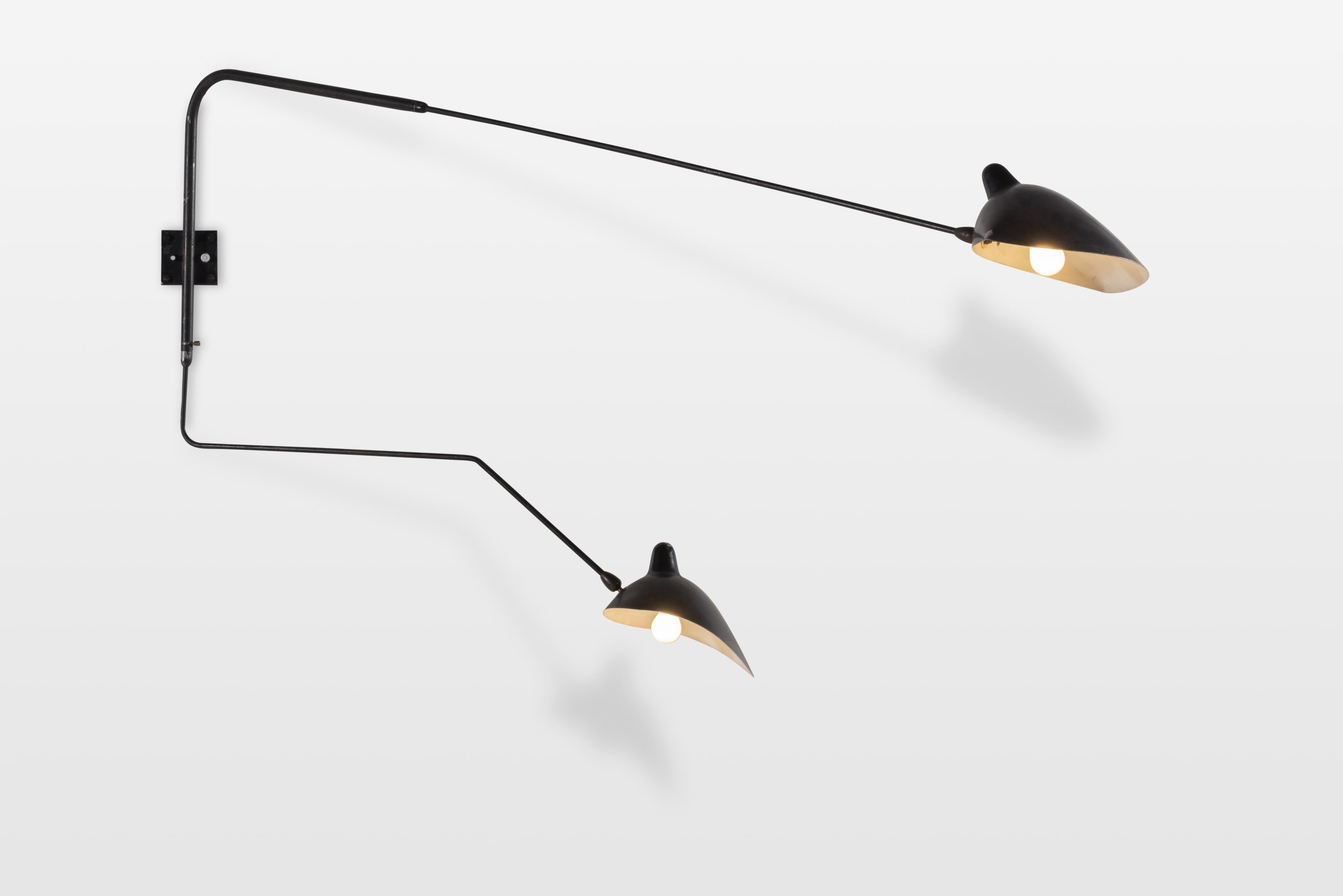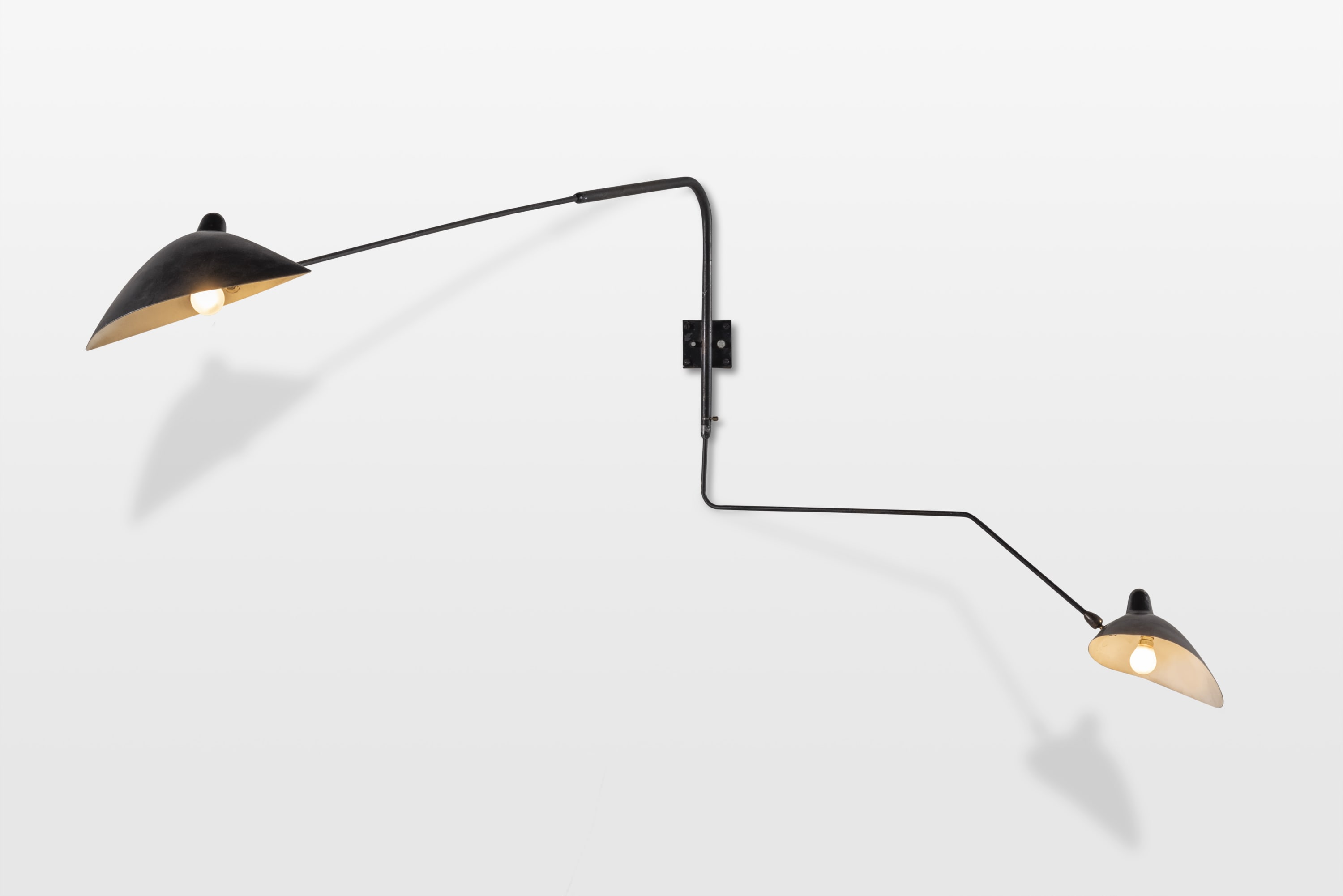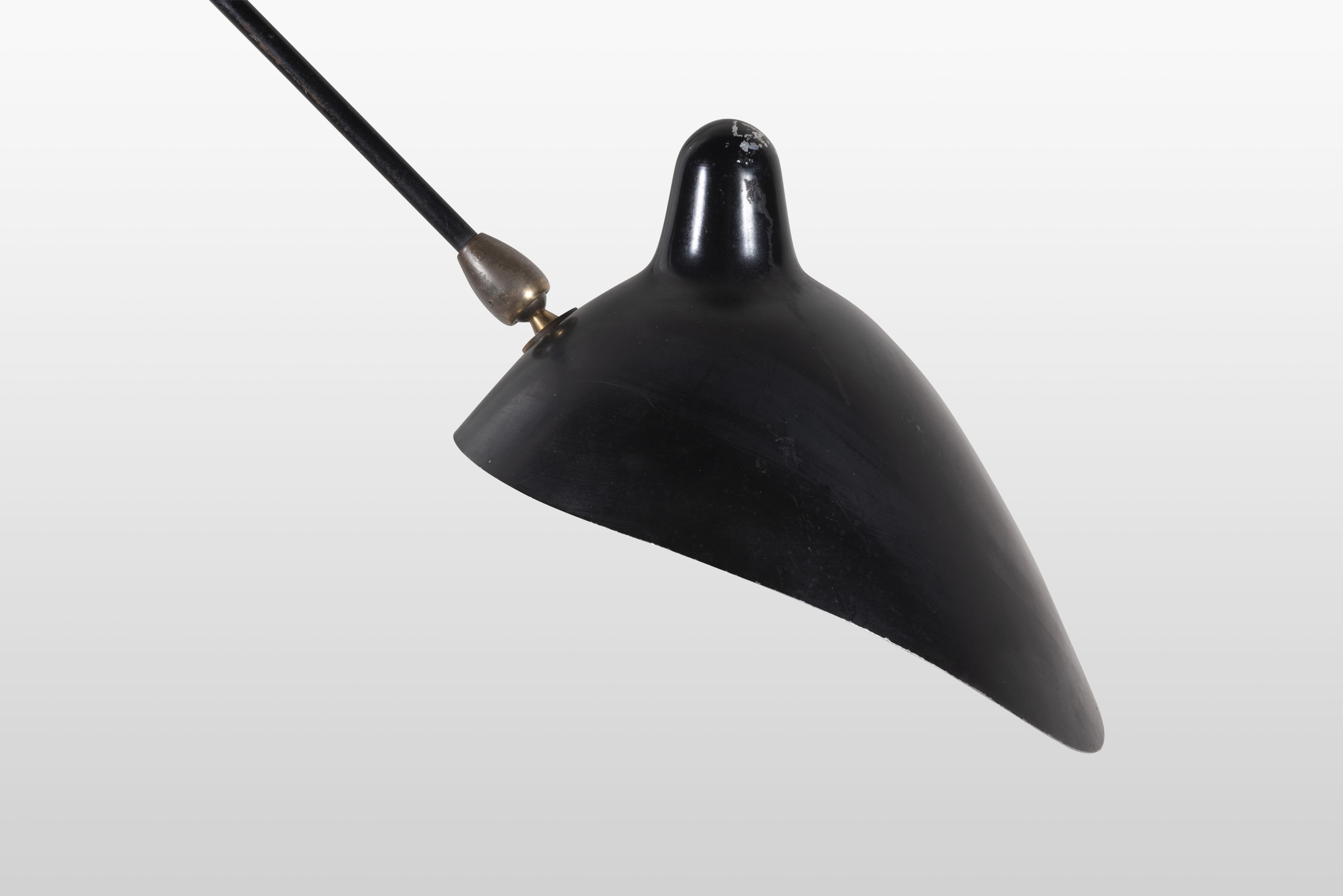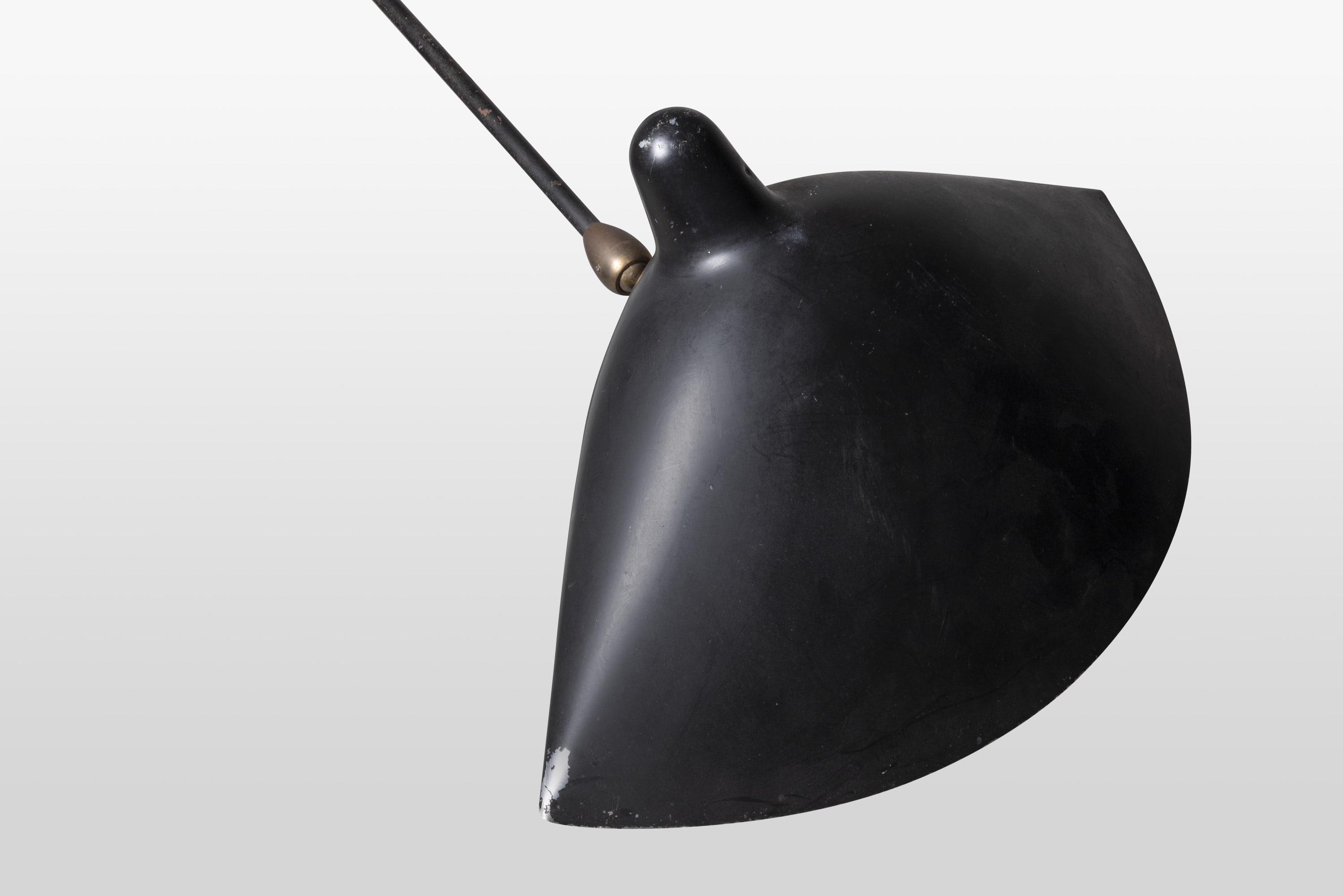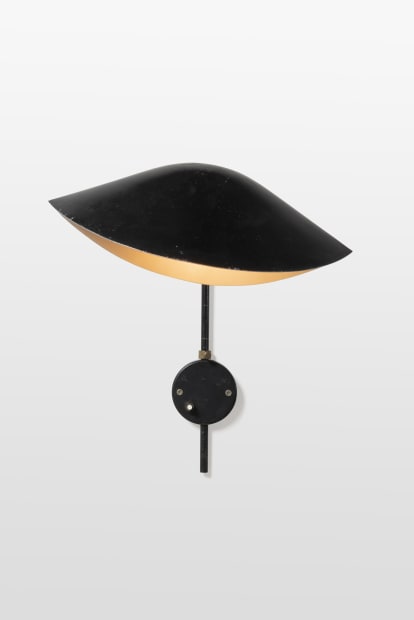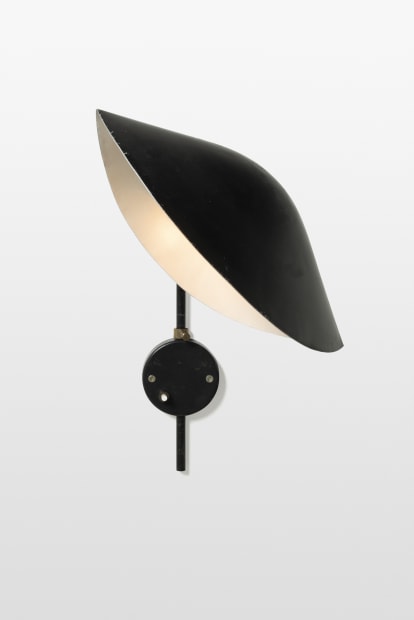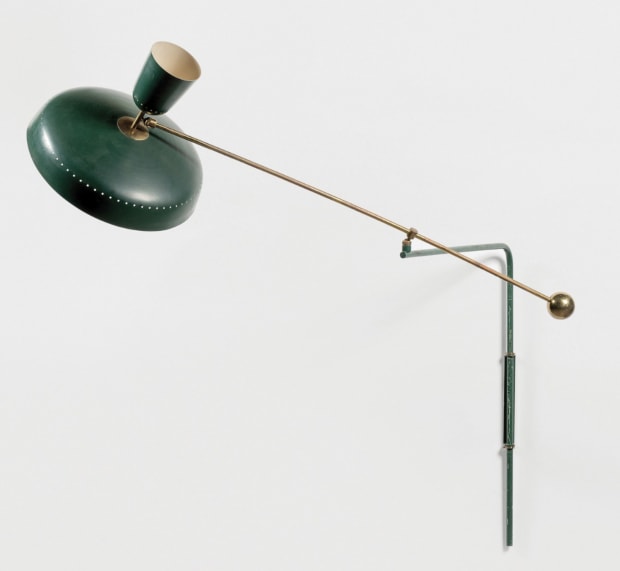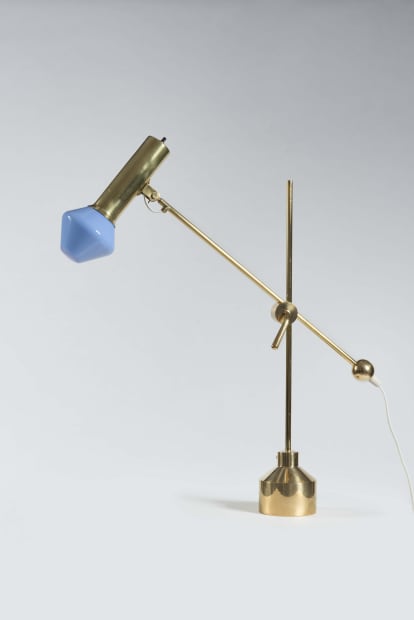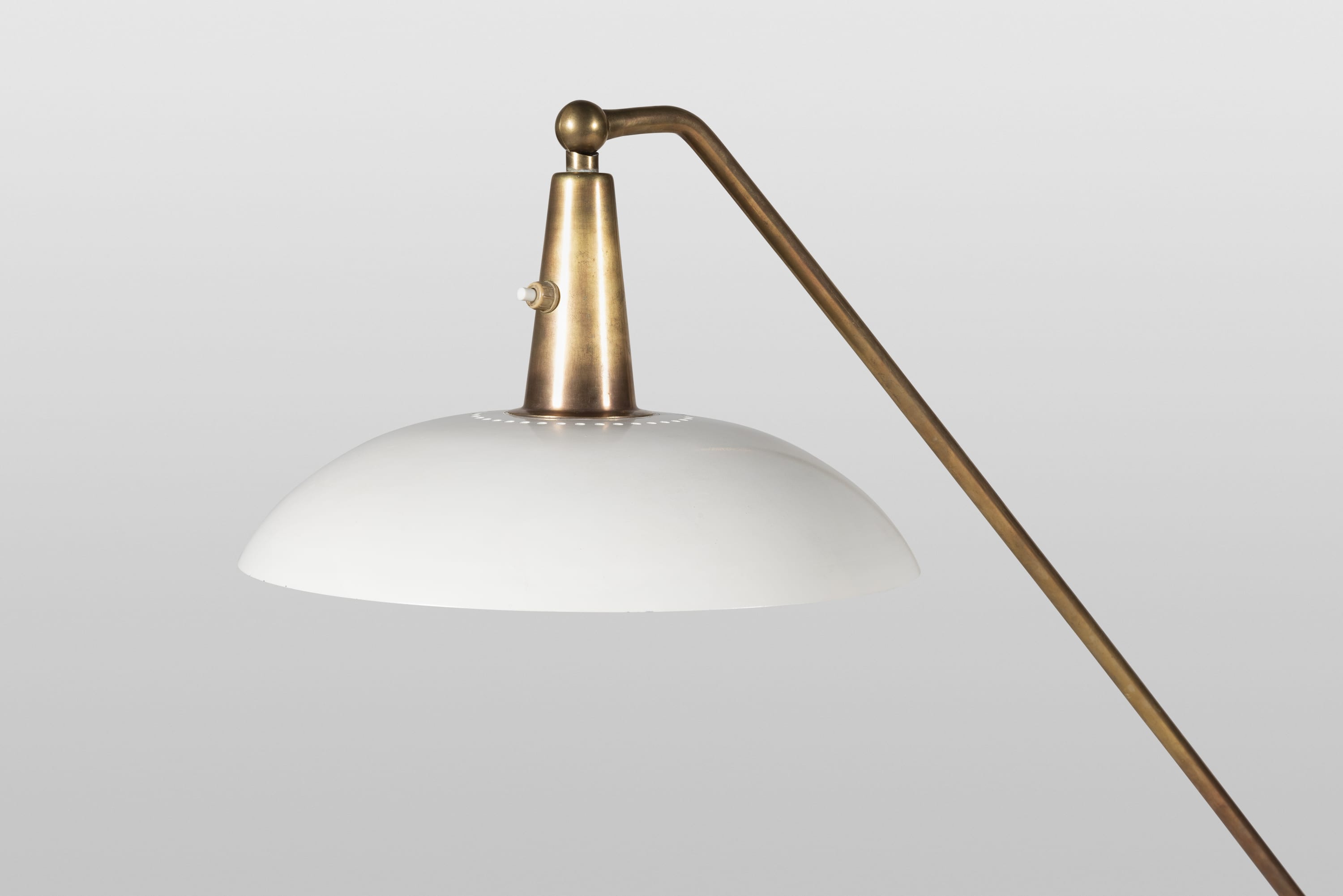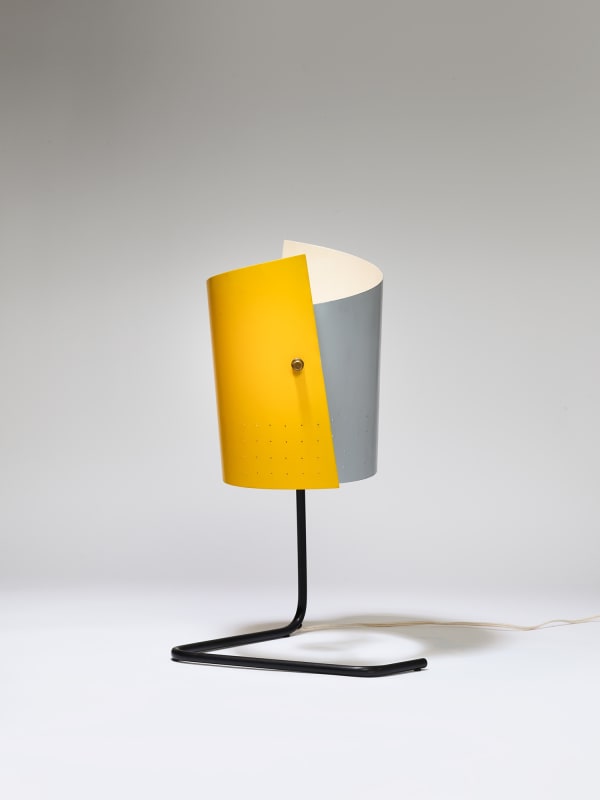-
-
Serge Mouille
Two rotating arms wall lamp, 1953Black lacquered metal and brass72 x 182 cm - 28 3/8 x 71 5/8 inManufactured by Les Ateliers Serge MouilleThis wall lamp with two pivoting arms is a perfect example of Serge Mouille's minimalistic and highly functional designs. This wall-mounted light fixture presents the uniform black painted metal as well as the discrete and highly functional qualities typical of Mouille’s production. The design was based on the classic layout of a dining room, with a table and sideboard for crockery, the idea being that the upper arm would provide general lighting whilst the lower one would provide illumination over the table. This lamp first appeared on Louis Sognot’s stand at the Salon des Arts Ménagers in Paris in 1954.
-
-

Willy Van der Meeren
Wall-mounted lamp , 1953Lacquered metal and copper50 x 200 x 40 cm - 19 3/4 x 78 3/4 x 15 3/4 inManufactured by TubaxWilly Van der Meeren’s designs are striking for their simplicity and directness. They are discreet, cleverly built and usually draw one’s attention through the way all their parts and joints are left visible and through some colorful elements. Early on in Tubax’ workshops, Willy van der Meeren started collaborating with architect Jean Stuyvaert. His obsession with shapes and his interest in the playfulness of bent steel sheet gave birth to some signature pieces such as the wall-mounted lamp (also referred as the “swivelling lamp”) in 1953. -

-
-
Gino Sarfatti
Rare floor lamp, 1946-1948Brass, painted aluminum, marbleheight 160 cm (variable) - height 63 in (variable)Manufactured by Arteluce, Milan, ItalySupported by a round brass fitting on a marble base, this floor lamp is composed of a rotative brass stem that simply rests on a marble sphere used as a centre of gravity. A second sphere, in polished brass, serves as a counterweight to adjust the lamp to any required height. Designed by Gino Sarfatti between 1946 and 1948, this elegant floor lamp depicts the designer’s search for subtle originality and engineering prowess.
Engineer Gino Sarfatti founded the modern lighting design company Arteluce in 1939. As a true innovator, he was also a very prolific designer who created iconic pieces while experimenting new materials and production techniques. -

-

-
MoMA 1951
-

-
Special Prize
-

-
Second prize
-

-
Third prize
-

-
Honorable mentions
-
Designed by Lester Geis, this gray and yellow table lamp is composed of a two-piece metal shade. The two sections of the lamp are independent from each other and can be moved separately, creating a very versatile fixture. The lamp can be used for direct or indirect lighting and as a 1 or 2-way reading lamp.
A.W. and Marion Geller were also rewarded for their innovative floor lamp. An inverted cone-shaped metal funnel containing the light bulb is suspended at mid-height of a metal tripod, tipped with small brass balls at the base. On top of the tripod rests a round shallow metal reflector that can be tilted to various positions to direct the light to the desired angle.
-
Mention
-
Modern lighting and the MoMA contest of 1951
Past viewing_room
